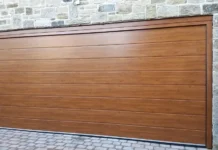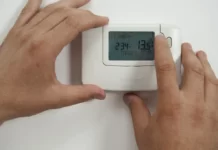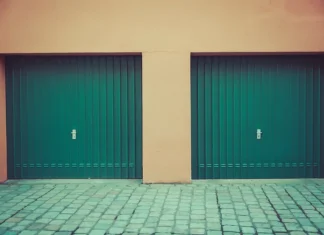Under-sink water filters have become increasingly popular in a society where health concerns extend to water purity. Most reasoning for wanting any water filter generally revolves around water quality. Even as it is readily available in our home there still are stories of water contaminations and health risks.
Deciding to get an under-sink water filter is one thing, putting it in practice is quite another. A few key steps need to be taken in order to begin this process. An under-sink water filter is quite complex and setting one up requires some DIY skills if not a plumber’s assistance.
When to Get an Under-Sink Water Filter?
Water is a vital part of our lives; it’s quite literally the most important consumable item we need to survive. A person can survive quite some time without food but without water, it’s a matter of days. It’s no wonder that we worry about it so much and want to have access to clean water. And that is the most important factor: its purity.
As we consume water we tend to notice slight differences in taste, smell, or overall feel and texture. Suspecting the water used is not the best is a reasonable enough motive to have it tested. Investigating whether or not our water contains any pollutants renders an explanation to the odd thing noticed about it before. Even if contamination is not extremely prevalent, other elements contribute to its condition.
Chlorine and limescale still wreak havoc in our tap water and can affect water quality. By extension, other elements present in the water have a negative impact on household items that use water. This is when most people decide to go for an under-sink water filter, to treat not only the quality of drinking water but all the water that is used in a household – for cooking, cleaning, etc.
Installation of Under-Sink Water Filters
As a comprehensive installation guide from BOS suggests, installing a filter under the sink starts with turning off the cold water supply. To check if the water is off, simply turn on the faucet and see if any water comes out. Once that is done, the part of starting the installation begins in earnest.
Some under the sink filter systems come with a separate smaller faucet that is used only for the filtered water. If the filter chosen has this feature, it’s important to decide where the faucet is going to go on the sink before positioning the filter underneath so that all the pipes and hose connectors have their place and reach the faucet. A hole may need to be drilled in the counter to fit it.
Detailed instructions on how to install each type of filtration system usually come included with the product, some are more complex than others. All under-sink systems that connect in line with the water main have to be securely attached with connector valves first on the pipes that bring water in, and secondly on the pipe that feeds water to the faucet.
Using washers for each connection is required and if any are missing you should contact the manufacturer to let them know. It’s important to have all the necessary parts to install the filter as there may be a restriction of sizing or the quality of the materials or shapes used.
In between is where the actual filtration mechanism lies, and depending on each type, some will have a small tank, a few layered tubes, or one single filtration cartridge. The layered tubes, which are the filtering medium, often come with a key that was designed to help screw on the rack in order to be securely installed.
Certain filters have to be installed in a specific position so they will work properly. The tank for instance has to stay upright and not on its side to fit under the sink. This can sometimes be overlooked, measurements for filter space are needed before purchasing the product.
Maintaining an Under-Sink Water Filter
Depending on how exactly each filter is designed, different maintenance features come into play. Once the installation part is done, maintaining an under-sink water filter should be easy enough, especially if you installed it yourself.
Mechanical filters used to clean out solid particles from water can be maintained either by cleaning the filtering medium or by changing it entirely. Cleaning it can extend its life and use a little longer, but after a while, it needs replacing.
Activated charcoal filters typically come with filtering cartridges that have to be replaced after some time of use. This kind of cartridge is sometimes part of a multi-layered filter that can also have mechanical, or reverse osmosis all in line with each other. When a system like this is layered sequentially, some of the filtering mediums will need changing or attention at different time intervals and not all at once.
This may mean changing the activated charcoal filter sooner than the mechanical one. The same goes for an ion-exchange filter, although they can last a little longer as they need time to recharge and work effectively. Replacing the filtering medium from an ion exchange filter, the resin bed, happens less frequently than with other mediums.
Ultraviolet water filters need a clean solar panel, which has to be checked and cleaned regularly. Changing the panel also is a maintenance requirement once in a while, with little hassle.
Combo Filters
Both maintenance and installation become more complicated when one or more of these types of water filtration systems are used in combination. Tracking what has been changed and what still needs changing in the future is another matter of importance. Keeping track of it all may require calendar scheduling, and some providers even send notifications to their customers reminding them of any future maintenance.
Making a Buying Decision
Finding the perfect under-sink water filter may depend on several key factors, like budget, available space, and water quality in the area. There can be situations when one type of filtering system is not enough, the possibility of multiple stages and layering mediums provide the perfect combination needed.
Most under-sink filters are point of use but a large variety of point of entry ones are also available. This option is highly useful when it comes to cleaning out all the water used in a home.
Final Thoughts
Many advantages can be gleaned from implementing an under-sink water filter. Improved taste and smell are only a few, followed by reduced limescale that can prolong the life of household electronic devices that use water. It’s a great investment especially for people wanting to avoid buying bottled water. Installation of these types of filters will require some skill with tools or help from a professional plumber, but extensive instructions from providers can help greatly.













